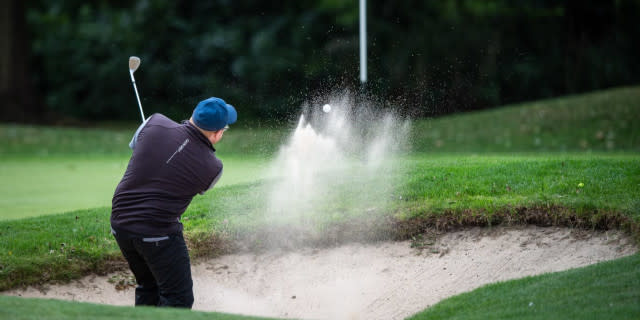
The Evolution of Golf Clubs Through History
The earliest origins of golf can be traced all the way back to the 13th century, where ball and stick games were played across Scotland.
The sport was officially established during the 15th century and thus, the history of golf was truly underway.
Golf clubs have a rich and expansive history that has seen the early designs completely rewritten - which has produced explosive results out on the course.
Featured Content
The development of the golf club can be tracked back to the 1400s, where equipment was made from available materials such as wood and crafted by anyone competent enough to do so.
There wasn’t a universal design that was strictly followed and most clubs held unique characteristics, with the majority of sticks being constructed by the golfer themselves.
This is a brief return to the past and an overview at how golf clubs have been enhanced across the history of the sport.

1500 - 1900
The early 1500s saw a spike in popularity for golf, as King James IV asked for a set of clubs to be created specifically for him.
During this time period, a set of golf clubs would consist of longnoses (driving) grassed drivers (fairway woods), niblicks (wedges) and a putting cleek.
Another important introduction took place in the 1600s, as the Featherie golf ball dominated the sport for the next 200 or so years.
These balls were exceptionally expensive to construct and easily damaged, which is why most players opted for wooden clubs, despite evidence that iron was more controllable and accurate.
The shafts for the wooden clubs were made from European woods such as hazel or ash, and the heads were thin and long - which wouldn’t inspire too much confidence at address!
They were exclusively made utilising harder woods, such as pear or beech.
1800 - 1930
The earliest designs of the ‘iron’ ended in disappointment, as they were difficult to strike consistently due to the manufacturing process that left the clubs in a rough manner.
Additionally, they would damage the precious Featherie ball, which was another reason for their unpopularity.
Through the introduction of drop forging, the possibility of crafting reliable irons became a reality and they were swiftly mass produced in factories.
The traditional wooden heads had previously been created by hand before the early 1900s, before factories were utilised to keep up with demand.
Golf was brought to the American shores during the early 1800s, and hickory wood was primarily used for shafts before the transition to steel around 1925.
An interesting aspect about the hickory shaft is that it required a slow and controlled swing to strike well, which is a stark contrast to some of the club head speeds we see on tour today!
The Royal and Ancient Golf Club (R&A) legalised the use of steel shafts in 1929, which provided improved accuracy and greater durability.
1930 - 1990
The R&A, which is the governing body for the game of golf, banned concave-faced wedges in 1931 and Gene Sarazen was responsible for the invention of the modern sand wedge that featured bounce.
Interestingly, players would frequently carry up to 30 golf clubs in their bag, but that changed when the R&A capped the maximum to 14 clubs.
Alongside the rule change was the new adaptation of club names, which was the numbered system that is present today.
The following decades saw little improvement for golf clubs, but after the conclusion of World War II, designers shifted their focus into synthetic and composite materials.
During the 1960s, fiberglass shafts were introduced but they did not receive much attention.
Karsten Solheim ignited the golfing industry in the 1970s through his invention of the PING Putter, which positioned more weight at the heel and toe to produce straighter putts.
The original graphite shaft was released in 1973 and it offered more strength over steel shafts - although modern graphites are now crafted using alternative materials.
The first metal club head to be produced took place in 1979, when TaylorMade looked to revolutionise the industry through the release of the Original One metalwood.
1990 - Present
The metalwood introduction didn’t receive traction until Callaway unveiled the Big Bertha in 1991, which featured an oversized head that would certainly appeal to the amateur golfer.
During the 2000s, hybrids were released to the market, and these were extremely popular tools for recreational golfers.
The pain of successfully striking longer irons had effectively vanished, as rescue clubs started to creep into a plethora of golf bags.
Hybrids also offered a new lease of golf for seniors, as they are beneficial for golfers with slower swing speeds.
The newest introductions to the sport include titanium club heads - and who could possibly forget the 2021 debut of Carbon from TaylorMade.
What Next?
Golf clubs have continuously evolved as the human race understood more about perfecting the imperfect sport of golf.
Long gone are the days of protecting elegant golf balls as the pursuit of maximum speed and distance continues to dominate the sport.
What materials do you think could be used to construct more efficient golf clubs in the future?
Related Content
How Technology Has Dramatically Changed Golf
Tags: GOLFERS Golf Clubs Golf gear equipment daily picks clubs









